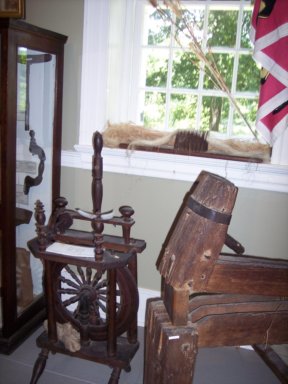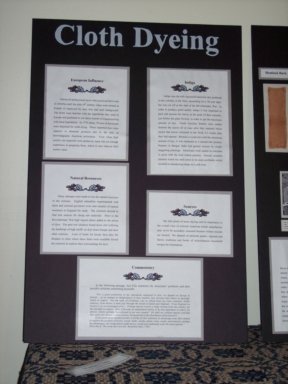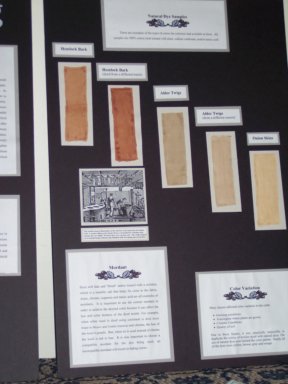Summer is a great time to be a kid again; to learn new things, especially when it comes to local history. 
This week we visited Putnam Park located in Redding, Connecticut. I have known for some time that our little area in the country is rich with historical events that helped shape the birth of our country, but how much still amazes me! This week we learned about the soldiers stay in Redding, Connecticut, during the harsh winter of 1778-1779.
In the museum, along 
On the upper left is the Spinning Jenny, named after the inventor's daughter who knocked it down by accident. James Hargreaves' invention helped speed up the process of spinning thread that was used to create garments such as the soldiers shirts and uniforms. In the picture, Dee Jr. is holding the wheel that must be turned to work all the spindles -- the wheel was designed to be at the correct height for a child his size or slightly larger -- to work.
To the upper right is the display of various tools used to make the fiber. It took a year from the time of the first planting of the flax seed, to harvesting, to drying, then moistening the fiber to pound the dickens out of it, then combing it repeatedly to soften & straighten, to finally spinning a fiber that would eventually be woven into a linen fabric that would be used to create a single shirt. It was an amazing amount of work -- there was no running to your local yarn shop for a skein of yarn or ball of thread! (It would be almost 20 years later that cotton, due to the invention of the Cotton Gin, would become the fiber/fabric of choice.)
The cloth dyeing techniques also interested the children greatly. They were fascinated that they used items such as tree bark and onions to create various colorways. (Perhaps the kids never considered those green knees from diving in the grass?) I'm hoping we have time this summer to experiment with some merino wool I've
At the end of the Museum tour the children were able to share their knowledge of "The Mad Hatter" -- not of the Alice In Wonderland Fame, but more in line with the history of Danbury, possible birthplace of the felting technique (less the use of Mercury). To the left is an image of one of the tools used to stretch the beaver's pelt prior to the felting technique. see my blog entry here for some history.
We learned much more than how much fiber played a role while the soldiers awaited the end of what was known as one of the worst winters in our state history, but this is the part I thought you, my readers, would enjoy most. I highly recommend visiting Putnam Park should you find yourself visiting the state of Connecticut!


No comments:
Post a Comment